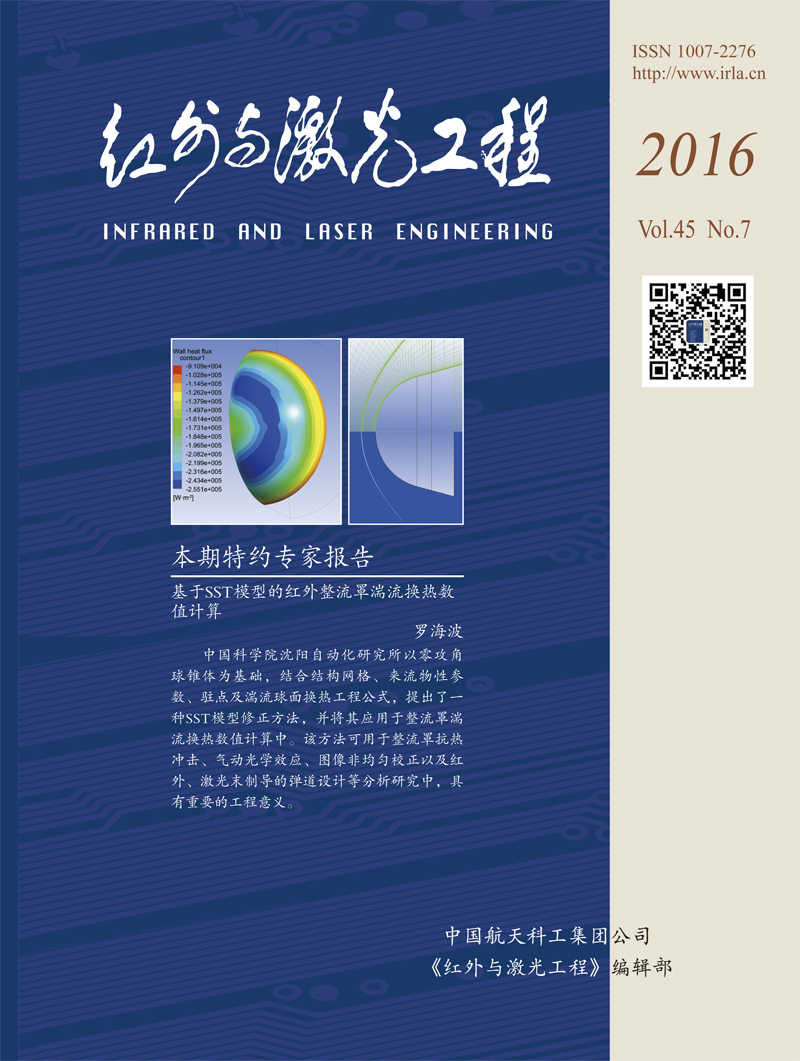|
[1]
|
Guo Chaobang, Liu Wenjie. Structural materials and thermal protection system of hypeisonic vehicles[J]. Aerodynamic Missile Journal, 2010(4):88-94. (in Chinese)郭朝邦, 李文杰. 高超声速飞行器结构材料与热防护系统[J]. 飞航导弹, 2010(4):88-94. |
|
[2]
|
Luo Haibo, Shi Zelin. Status and prospect of infrared imaging guidance echnology[J]. Infrared and Laser Engineering, 2009, 38(4):565-573. (in Chinese)罗海波, 史泽林. 红外成像制导技术发展现状与展望[J]. 红外与激光工程, 2009, 38(4):565-573. |
|
[3]
|
Fan Jinxiang, Guo Yunhe. USA's global infrared detecting equipment:advancement, architecture analysis and capability prediction[J]. Infrared, 2006, 34(1):1-9. (in Chinese)范晋祥, 郭云鹤. 美国导弹防御系统全域红外探测装备的发展、体系分析和能力预测[J]. 红外, 2006, 34(1):1-9. |
|
[4]
|
Huang Shike, Zhang Tianxu, Li Lijuan, et al. IR guiding technology based on multispectral imaging for air to air missile[J]. Infrared and Laser Engineering, 2006, 35(1):16-20. (in Chinese)黄仕科, 张天序, 李丽娟, 等. 空空导弹多光谱红外成像制导技术研究[J]. 红外与激光工程, 2006, 35(1):16-20. |
|
[5]
|
Aderson J D. Hypersonic and High Temperature Gas Dynamic[M]. New York:McGraw-Hill, 1989:228-257. |
|
[6]
|
Liu Xianming. Theoretical calculation and its application of aerodynamic heat of air to air missle[J]. Aero Weaponry, 1997(2):22-25. (in Chinese)刘仙明. 空空导弹气动加热理论计算及其应用[J]. 航空兵器, 1997(2):22-25. |
|
[7]
|
Lv Lili. Study of engineering method of calculation of aerodynamic heating of body at hypersonic[D]. Xi'an:Northwestern Polytechnical University, 2005, 2:22-29. (in Chinese)吕丽丽. 高超声速气动热工程算法研究[D]. 西安:西北工业大学, 2005, 2:22-29. |
|
[8]
|
Daniel C Harric. Materials for Infrared Windows and Domes:Properties and Performance[M]. New York:SPIE Optical Engineering Press, 1999:141-145. |
|
[9]
|
Klein C. Infrared missile domes:heat flux and thermal shock[C]//SPIE, 1993, 1997:150-169. |
|
[10]
|
He Youjin, Zhang Peng, Peng Jun, et al. Aerodynic heating and stress analysis on dome of infrared high speed air to air missiles[J]. Infrared Technology, 2007, 29(7):373-376. (in Chinese)何友金, 张鹏, 彭军, 等. 高速红外空空导弹整流罩气动加热及应力分析[J]. 红外技术, 2007, 29(7):373-376. |
|
[11]
|
Bian Yingui, Xu Ligong. Aerothermodynamics[M]. Heifei:Press of University of Science and Technology of China, 2011:325-327. (in Chinese)卞荫贵, 徐立功. 气动热力学[M]. 合肥:中国科学技术大学出版社, 2011:325-327. |
|
[12]
|
Zhou Yu, Qian Weiqi, Deng Youqi, et al. Introductory analysis of the influence of Menter's SST turbulence model's parameters[J]. Air Aerodynamic Sinica, 2010, 28(2):213-217. (in Chinese)周宇, 钱炜祺, 邓有奇, 等. SST两方程湍流模型中参数影响初步分析[J]. 空气动力学学报, 2010, 28(2):213-217. |
|
[13]
|
David C Wilcox. Formulation of the k- turbulence modle revisited. AIAA 2007-1408[R], 2007. |
|
[14]
|
Ansys, Inc. ANSYS CFX-Solver Modeling Guide Release 12.1[M]. New York:Ansys Inc, 2009. |
|
[15]
|
Van Driest E R. On the aerodynamic heating of blunt bodies[J]. Journal of Applied Mathematics and Physics (ZAMP), 1958, 9b(5/6):233-248. |
|
[16]
|
Van Driest E R. The problem of aerodynamic heating[J]. Aeron Eng Rev, 1956, 15(10):26-41. |
|
[17]
|
Crabtree L F, Dommentt R L, Woodley J G. Estimation of heat transfer to flat paltes, cones and blunt bodies. Royal Aircraft Establishment Technical Report 65137[R],1965:19-25. |
|
[18]
|
Fu Dexun, Ma Yanwen, Li Xinliang, et al. Direct Numerical Simulation of Compressible Turbulent Flow[M]. Beijing:Science Press, 2010:430-435. (in Chinese)傅德薰, 马延文, 李新亮, 等. 可压缩湍流直接数值模拟[M]. 北京:科学出版社, 2010:430-435. |









 DownLoad:
DownLoad: